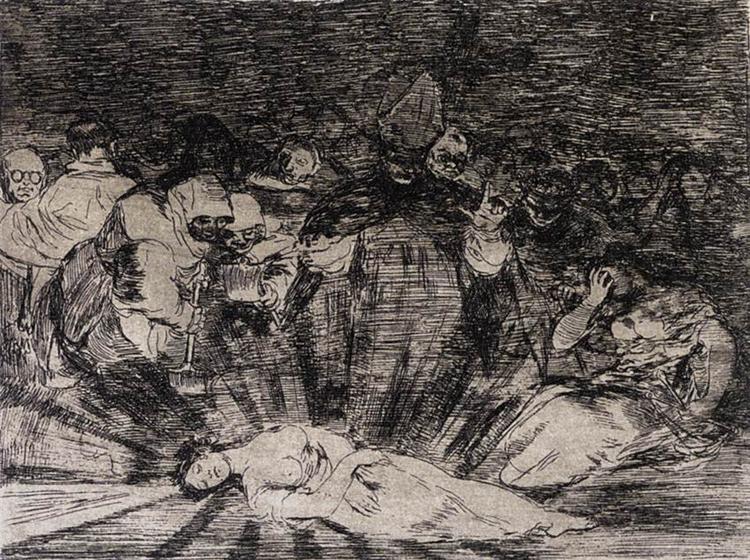
Francisco Goya, a Spanish painter who lived from 1746-1828, is considered one of the most important artists of his time. Early in his career he served as the portrait artist for the Spanish Crown and eventually was appointed the director of the Royal Academy. Although well connected and respected, he did not shy away from difficult subject matter. For example, his series of prints entitled The Disasters of War deal with the horrors and complexity of war.
I was privileged to see this series at the Prada Museum in Madrid, and although he left very few writings that illuminate his views, his work speaks for itself. Goya delivered a powerful message through pictorial narratives. In addition, Goya interestingly produced several works that dealt with mental illness as well as political and religious corruption.
The work shown here is a print entitled Truth has Died. Veritas, the goddess of truth, lies bare breasted and dead in the center of the piece. To the right is Justice mourning her death while the Bishop, a power broker of that day, blesses her corpse as a pair of monks prepare to dig her grave. The work is clearly a rebuke of the Catholic Church shortly after the King’s repeal of the first Spanish Constitution — a progressive document that eliminated feudalism, established national sovereignty, separation of powers, a parliament with an indirect electoral system and freedom of the press.
Goya’s work was not only a critical rebuke but one that allows future generations to recount, reflect and learn from a critical moment in history.
It is becoming more and more fashionable to disregard expertise and established knowledge and to consider every opinion on any matter as good as any other. I personally find this notion dangerous as it encourages willful ignorance. Great artists have always been truth seekers willing to skillfully and thoughtfully dissent. History is not kind to artists that play it safe and simply do what is expected of them. However, it is a difficult and dangerous matter to confront those that hold sway over your livelihood and well-being. Yet in the face of this prospect Goya’s work consistently demonstrated his courage in the midst of turmoil to powerfully separate the real from the un-real.
